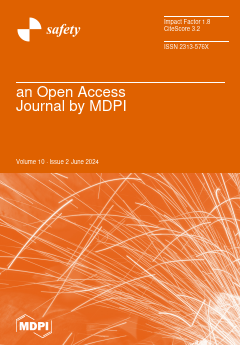Protecting people from the risks associated with products is a critical concern in today’s economy. Pakistan, being the world’s fifth most populous country, lacks the framework of warning labels and therefore faces a significant gap in product warning labels. Pakistan is a representative
[...] Read more.
Protecting people from the risks associated with products is a critical concern in today’s economy. Pakistan, being the world’s fifth most populous country, lacks the framework of warning labels and therefore faces a significant gap in product warning labels. Pakistan is a representative of a number of countries that export a variety of products to Pakistan; however, warning labels on these goods are typically in English, which might mislead people of Pakistan in perceiving the hazard level. It is therefore imperative to conduct research into the non-textual and cross-cultural understanding of labels from the perspective of Pakistan. This study examined the applicability of ANSI Z535.4 in the context of Pakistan. A total of 66 (34 male and 32 female) undergraduate students with a mean age of 20.5 participated in this study. A meticulous experiment was designed using a nine-point rating scale with anchors on both sides, where one represented ‘not at all hazardous’ and nine represented ‘extremely hazardous’. Participants rated each component of warning labels, i.e., color, symbol, signal words, and their complex configurations. The results showed alignment with the ANSI Z535.4 standards for some components (i.e., colors, symbols, and signal words) and complex configurations, whereas no significant difference was found in perceived hazard levels between green (M = 3.167), blue (M = 3.591, and yellow (M = 3.652) colors, with a
p-value greater than 0.05. Participants did not differentiate significantly between signal words, i.e., caution (M = 5.182) and warning (M = 5.879). Participants also did not differentiate significantly between complex configurations, i.e., safety alert–caution–yellow (M = 5.076) and safety alert–warning–orange (M = 5.197), with
p-values greater than 0.05. These results state that discrepancies in the perception of warning labels exist. This study is the first of its kind conducted in the context of Pakistan, which will help policy makers to consider the findings before implementing a policy. In fact, differences in perception could result in failure to take appropriate precautions. Nonetheless, these nuances can be overcome with proper awareness through training for the people.
Full article





